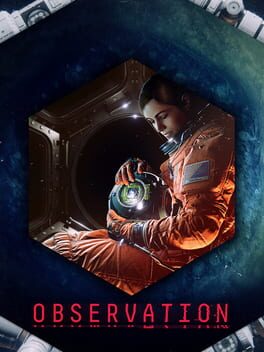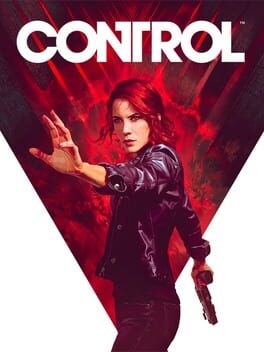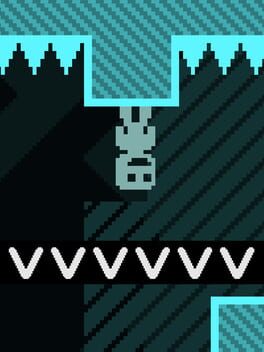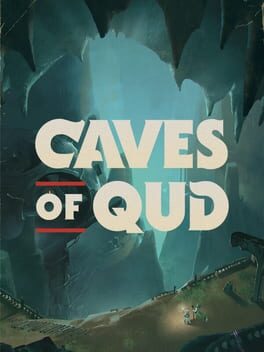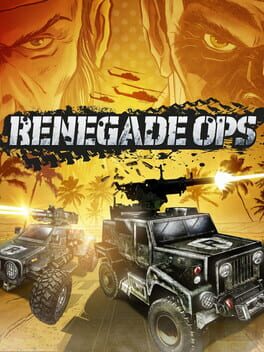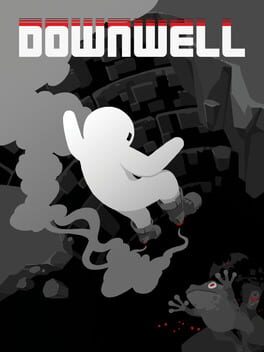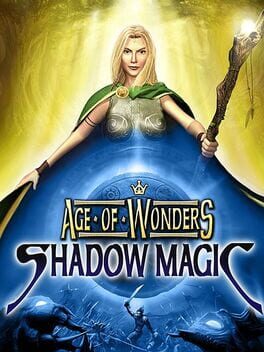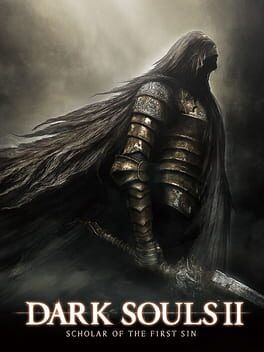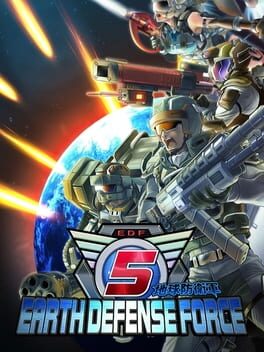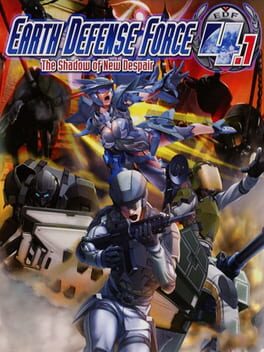Klaustrix
BACKER
2019
A cinematic sci-fi thriller that puts you in the role of the ship's computer rather than the human survivors. This makes for a compelling shift in perspective as you and your crewmate try to understand what has gone wrong after a mysterious incident has badly damaged the ship, caused crew to go missing, and leaves you unsure where you are.
Since the ship is heavily automated you have control over the inner workings and the characters need you to open doors, set off fire suppression systems, perform scans etc. so they can progress in the story. Since the incident reset your system you have to go about puzzling how to reconnect to the various doors and ship systems so you can assist them. It makes for fresh and alienating gameplay as you can't even talk in anything other than pre-recorded responses and can only modify the environment around the actors - though you do get a little floating camera through which you can feel like part of the crew and expand your vision/control to places your static cameras can't see.
The story too leaves you feeling somewhat helpless as you can only passively observe events and use your limited control over the ship to assist or impede the characters. The game still hinges on you exploring the tense and spooky environments to solve problems, but in doing so you also become uniquely aware of disturbing events unfolding around the crew with no way to communicate it to them, making things extra tense.
The overall experience was fantastic, there's a bunch of wild twists that make the story fascinating from start to finish. Having to deal with genuinely new and strange scenarios from this weird vantage point made the whole game very memorable, though there are a couple of moments that are made a bit silly by the premise. Still, this game is solid, well written, beautifully presented, and makes for a genuinely fresh experience if you're comfortable with more of a focus on story than gameplay.
Since the ship is heavily automated you have control over the inner workings and the characters need you to open doors, set off fire suppression systems, perform scans etc. so they can progress in the story. Since the incident reset your system you have to go about puzzling how to reconnect to the various doors and ship systems so you can assist them. It makes for fresh and alienating gameplay as you can't even talk in anything other than pre-recorded responses and can only modify the environment around the actors - though you do get a little floating camera through which you can feel like part of the crew and expand your vision/control to places your static cameras can't see.
The story too leaves you feeling somewhat helpless as you can only passively observe events and use your limited control over the ship to assist or impede the characters. The game still hinges on you exploring the tense and spooky environments to solve problems, but in doing so you also become uniquely aware of disturbing events unfolding around the crew with no way to communicate it to them, making things extra tense.
The overall experience was fantastic, there's a bunch of wild twists that make the story fascinating from start to finish. Having to deal with genuinely new and strange scenarios from this weird vantage point made the whole game very memorable, though there are a couple of moments that are made a bit silly by the premise. Still, this game is solid, well written, beautifully presented, and makes for a genuinely fresh experience if you're comfortable with more of a focus on story than gameplay.
2022
Apico is the fusion of a simple crafting game with a genetic algorithm system. There's a smidge of story in there but it's all just to get you into the core loop of exploring, gathering resources, and breeding bees.
That is the tall and short of the entire game. You craft beekeeping equipment, put bees in and let them pollinate nearby flowers. This produces honeycomb which can be fed into other machines to harvest a handful of resources that change depending on which the flowers the bees pollinated. As you play you unlock new tools and equipment, travel to different islands, find new flowers, and discover new bee species which can be crossbred to unlock hidden ones.
The bee breeding is where the algorithm comes in allowing you to share traits and customise stats, albeit very slowly and with the realistic luck of recessive and dominant genetic traits. This lets you trade tolerances to weather, what times of day they are active, the climate they prefer... it's incredibly in depth but largely numeric and not very well illustrated. I ended up accidentally breeding for less variety and had to spend hours trying to breed it back into my hives because I misunderstood how the numbers work and almost soft locked myself.
It's a cute simulation of real life biodiversity and grows increasingly complex as you play, but sadly the game loop becomes arduous fast. The sheer number of traits, species, flowers, and products requires a vast quantity of the same few machines to sort and manage them, each with limited capacity, fiddly pixelated UI's, and a small resolution. Creating just one machine is a slow grind of making intermediary resources that pad the process and doesn't pair well with the exponential growth, and the bees themselves work very slowly.
Overall Apico is doing some ambitious things but quickly outgrows the limitations of its own design. The variety is almost entirely buried in numbers while you use the same few machines to pump out different coloured variants of the same few types of product. Getting anywhere is incredibly slow, repetitive, time consuming, and labour intensive so if you're not gripped by the core loops and genetic algorithm your mileage may vary.
That is the tall and short of the entire game. You craft beekeeping equipment, put bees in and let them pollinate nearby flowers. This produces honeycomb which can be fed into other machines to harvest a handful of resources that change depending on which the flowers the bees pollinated. As you play you unlock new tools and equipment, travel to different islands, find new flowers, and discover new bee species which can be crossbred to unlock hidden ones.
The bee breeding is where the algorithm comes in allowing you to share traits and customise stats, albeit very slowly and with the realistic luck of recessive and dominant genetic traits. This lets you trade tolerances to weather, what times of day they are active, the climate they prefer... it's incredibly in depth but largely numeric and not very well illustrated. I ended up accidentally breeding for less variety and had to spend hours trying to breed it back into my hives because I misunderstood how the numbers work and almost soft locked myself.
It's a cute simulation of real life biodiversity and grows increasingly complex as you play, but sadly the game loop becomes arduous fast. The sheer number of traits, species, flowers, and products requires a vast quantity of the same few machines to sort and manage them, each with limited capacity, fiddly pixelated UI's, and a small resolution. Creating just one machine is a slow grind of making intermediary resources that pad the process and doesn't pair well with the exponential growth, and the bees themselves work very slowly.
Overall Apico is doing some ambitious things but quickly outgrows the limitations of its own design. The variety is almost entirely buried in numbers while you use the same few machines to pump out different coloured variants of the same few types of product. Getting anywhere is incredibly slow, repetitive, time consuming, and labour intensive so if you're not gripped by the core loops and genetic algorithm your mileage may vary.
2019
A charming and philosophical dip into science fiction, Outer Wilds has you taking the role of an alien who is coming of age and as tradition holds it's time for you to become a space explorer. You'll go on a little tour of the village, learn about your people, visit the museum of their discoveries and then take to the starry sky to explore your solar system - and my is there much to discover.
This game really captures the essence of exploration and discovery in ways few other games have. The majority of gameplay is more akin to archaeology than anything as you set down on a planet, begin roaming, and learn about the beings that formerly inhabited this system. You'll discover their relics, and uncover how their past affects your future. There's little I can discuss without getting into spoilers but if you can get into the core loop of exploring and you enjoy the lore there's a ton of value to be discovered here.
Interwoven with the history are the puzzles that each planet embodies with underwater ruins on an ocean world, the strange way two planets trade their sand, a world collapsing into itself, deadly tunnels on the edge of the system, and more. Each of the planets makes for an adventure of its own and you have the freedom to explore each in any order at your own leisure, with all the clues you discover and how they are linked being helpfully curated on a screen in your space ship.
It may sound simple and obtuse but Outer Wilds and its breath-taking twists had me snared from the end of the first 'day' exploring its sandbox. The mix of clever environmental puzzles, well written lore, and fractal 'secrets within puzzles within secrets' design makes it a gem of mechanical design meets worldbuilding.
This game really captures the essence of exploration and discovery in ways few other games have. The majority of gameplay is more akin to archaeology than anything as you set down on a planet, begin roaming, and learn about the beings that formerly inhabited this system. You'll discover their relics, and uncover how their past affects your future. There's little I can discuss without getting into spoilers but if you can get into the core loop of exploring and you enjoy the lore there's a ton of value to be discovered here.
Interwoven with the history are the puzzles that each planet embodies with underwater ruins on an ocean world, the strange way two planets trade their sand, a world collapsing into itself, deadly tunnels on the edge of the system, and more. Each of the planets makes for an adventure of its own and you have the freedom to explore each in any order at your own leisure, with all the clues you discover and how they are linked being helpfully curated on a screen in your space ship.
It may sound simple and obtuse but Outer Wilds and its breath-taking twists had me snared from the end of the first 'day' exploring its sandbox. The mix of clever environmental puzzles, well written lore, and fractal 'secrets within puzzles within secrets' design makes it a gem of mechanical design meets worldbuilding.
2019
Control was my first exposure to Remedy and it was such an impressive piece that I ended up playing the rest of their game catalogue. A stunning mix of noir detective thriller with a world inspired by X-Files/Fringe and the SCP writing project. You couldn't ask for a more iconic IP and to top it off you have Courtney Ann Hope in the lead role as Jesse Faden.
The story revolves around a woman looking for her brother who thinks he has been taken to the Federal Bureau of Control's headquarters. Over the course of the game we explore the Oldest House, meet the cast of security officers and scientists there in the midst of a paranormal crisis, and discover their histories while learning what exactly goes on in the secretive bureau's HQ.
From start to finish the story had me totally captivated as it brings to life a beautifully realised tale of paranormal science fiction. Remedy managed to build a vivid and intriguing world that does the inspirations justice, from the setting to the surreal events that take place throughout. The game's art direction is genuinely amazing as you run into one iconic sight after the next, many of which are still burned into my brain to this day. It's story, world building, environments, music, animations, weapon designs, and characters are all well worth experiencing first hand.
Sadly Remedy learned little from their mistakes with Quantum Break as gameplay focuses on repetitive cover shooting. The 'sidearm' that you wield is so unique in concept and animation that it's underwhelming to see it's just a pistol in practice. The powers and abilities do liven things up but can only do so much when enemies remain largely the same from start to finish. Bosses are also underwhelming with a bunch of 'regular enemies with lots of HP' types, and only a couple being designed even close to the level of prestige the setting demands.
While gunplay makes up the vast bulk of the game there is some exploration and a few puzzles to break things up. The path through the building is linear and although it is satisfying to finally enter areas that long elude you, and they peel back to reveal incredible sights, it's disappointing when they inevitably end up host to more dull gun fights against the same dull foes. You can eventually go anywhere but there's almost never any motivation to return besides some fetch quests and the alert events which serve as fodder to grind for an uninspired crafting system you can ignore.
Thankfully all the best parts of Control make up for its flaws. There's so much charm to the story and characters, the environments and events are intriguing, and the sheer spectacle and play-feel of the abilities just barely makes the endlessly samey combat tolerable. The story, writing, and visuals I can't talk about make this game one of my favourites and I can't wait for Remedy's next entry in their bizarre and wonderful world.
The story revolves around a woman looking for her brother who thinks he has been taken to the Federal Bureau of Control's headquarters. Over the course of the game we explore the Oldest House, meet the cast of security officers and scientists there in the midst of a paranormal crisis, and discover their histories while learning what exactly goes on in the secretive bureau's HQ.
From start to finish the story had me totally captivated as it brings to life a beautifully realised tale of paranormal science fiction. Remedy managed to build a vivid and intriguing world that does the inspirations justice, from the setting to the surreal events that take place throughout. The game's art direction is genuinely amazing as you run into one iconic sight after the next, many of which are still burned into my brain to this day. It's story, world building, environments, music, animations, weapon designs, and characters are all well worth experiencing first hand.
Sadly Remedy learned little from their mistakes with Quantum Break as gameplay focuses on repetitive cover shooting. The 'sidearm' that you wield is so unique in concept and animation that it's underwhelming to see it's just a pistol in practice. The powers and abilities do liven things up but can only do so much when enemies remain largely the same from start to finish. Bosses are also underwhelming with a bunch of 'regular enemies with lots of HP' types, and only a couple being designed even close to the level of prestige the setting demands.
While gunplay makes up the vast bulk of the game there is some exploration and a few puzzles to break things up. The path through the building is linear and although it is satisfying to finally enter areas that long elude you, and they peel back to reveal incredible sights, it's disappointing when they inevitably end up host to more dull gun fights against the same dull foes. You can eventually go anywhere but there's almost never any motivation to return besides some fetch quests and the alert events which serve as fodder to grind for an uninspired crafting system you can ignore.
Thankfully all the best parts of Control make up for its flaws. There's so much charm to the story and characters, the environments and events are intriguing, and the sheer spectacle and play-feel of the abilities just barely makes the endlessly samey combat tolerable. The story, writing, and visuals I can't talk about make this game one of my favourites and I can't wait for Remedy's next entry in their bizarre and wonderful world.
2010
A charming and devilishly simple but challenging puzzle platformer by Terry Cavanagh (Dicey Dungeons, Super Hexagon).
You can move left and right but instead of jumping you flip gravity, a simple mechanic but explored in a variety of interesting ways to its fullest extent across the different areas of the game. The puzzles begin simple and grow increasingly complex as you have to deal with auto-scrolling, looping, and even making journeys across multiple screens and back again. There's a surprising amount of variety and challenge that comes from such a simple singular mechanic.
The art may be simplified and the story just an excuse to stitch the puzzles together, but the music is absolutely the highlight here next to gameplay. Every song by Magnus Palsson is a chiptune classic that makes spending time in each area a head bopping pleasure.
While not very long VVVVVV is more minimalist than minimal. It makes the most of what it has to offer and doesn't pretend to be anything more. It doesn't convolute it's design with unnecessary systems, it has some collectibles for challenges, explores its one mechanic in interesting ways, and doesn't outstay it's welcome. For the crazy low price now it's a steal and a guaranteed fun 2 hours of gameplay for those who like platformers.
You can move left and right but instead of jumping you flip gravity, a simple mechanic but explored in a variety of interesting ways to its fullest extent across the different areas of the game. The puzzles begin simple and grow increasingly complex as you have to deal with auto-scrolling, looping, and even making journeys across multiple screens and back again. There's a surprising amount of variety and challenge that comes from such a simple singular mechanic.
The art may be simplified and the story just an excuse to stitch the puzzles together, but the music is absolutely the highlight here next to gameplay. Every song by Magnus Palsson is a chiptune classic that makes spending time in each area a head bopping pleasure.
While not very long VVVVVV is more minimalist than minimal. It makes the most of what it has to offer and doesn't pretend to be anything more. It doesn't convolute it's design with unnecessary systems, it has some collectibles for challenges, explores its one mechanic in interesting ways, and doesn't outstay it's welcome. For the crazy low price now it's a steal and a guaranteed fun 2 hours of gameplay for those who like platformers.
2022
Signalis is Rose Engine's first game and wow what a start. It brings back the old-school horror gameplay of Silent Hill combined with the resource management of Resident Evil, wrapped up in a gooey eldritch sci-fi story and damn did I love every bite of this short experience.
You control Elster, a part organic robot called a Replikant, looking for someone in a facility that's gone to hell at the edge of the solar system. I can't talk much more about the plot without spoilers and while I was a little unsure at first, by the end I was vibing with the enigmatic setting that's both surreal and nightmarish in all the right ways. I wasn't sure about the anime look at first either but it's surprisingly restrained and it makes sense in how it reflects the themes resulting in some iconic visuals.
The gameplay has you exploring the building, carefully juggling resources, and solving puzzles. I found the combat okay for the most part but sometimes had trouble locking on to enemies properly. The stealth mechanics and limited resources mean fights shouldn't be started carelessly, but unavoidable bottlenecks and bosses left me having to retry a couple of times as a result. The other issue is it feels like there are a few too many weapons crammed in to such a short game with the power leaning top heavy as the pistol is quickly overshadowed and all but useless by the end of the game.
The puzzles themselves are mostly simple but fun and feed into the exploration side of the game using a mix of environmental and logic problems. I had a page of notes and sketches by the end which is often a good sign. I've heard people complain about the 6 slot inventory and while it can be a little restrictive it didn't bother me at all, though the developer is apparently taking steps to address this as it's been such a point of contention.
Overall Signalis is beautifully put together. From the lovingly crafted low-poly PS1 aesthetic, animations that evoke memories of Evangelion, and writing that hints at a bleak and brutal existence on the edge of space during war-time. It manages to be deeply atmospheric, dark, and creepy with mysteries that kept me hooked from one surprise to the next without a single jump scare. I rate this one highly for managing to create something unique and compelling out of the best parts of its inspirations, and coming from a 2 person team it's all the more impressive.
You control Elster, a part organic robot called a Replikant, looking for someone in a facility that's gone to hell at the edge of the solar system. I can't talk much more about the plot without spoilers and while I was a little unsure at first, by the end I was vibing with the enigmatic setting that's both surreal and nightmarish in all the right ways. I wasn't sure about the anime look at first either but it's surprisingly restrained and it makes sense in how it reflects the themes resulting in some iconic visuals.
The gameplay has you exploring the building, carefully juggling resources, and solving puzzles. I found the combat okay for the most part but sometimes had trouble locking on to enemies properly. The stealth mechanics and limited resources mean fights shouldn't be started carelessly, but unavoidable bottlenecks and bosses left me having to retry a couple of times as a result. The other issue is it feels like there are a few too many weapons crammed in to such a short game with the power leaning top heavy as the pistol is quickly overshadowed and all but useless by the end of the game.
The puzzles themselves are mostly simple but fun and feed into the exploration side of the game using a mix of environmental and logic problems. I had a page of notes and sketches by the end which is often a good sign. I've heard people complain about the 6 slot inventory and while it can be a little restrictive it didn't bother me at all, though the developer is apparently taking steps to address this as it's been such a point of contention.
Overall Signalis is beautifully put together. From the lovingly crafted low-poly PS1 aesthetic, animations that evoke memories of Evangelion, and writing that hints at a bleak and brutal existence on the edge of space during war-time. It manages to be deeply atmospheric, dark, and creepy with mysteries that kept me hooked from one surprise to the next without a single jump scare. I rate this one highly for managing to create something unique and compelling out of the best parts of its inspirations, and coming from a 2 person team it's all the more impressive.
2015
Caves of Qud is a traditional roguelike RPG adventure game set in a science fantasy world of swords, guns, and psionics as you explore a vast and detailed world one square at a time. It sounds amazing but in practice if you aren't a tried and true aficionado of the old-school roguelike club your mileage may vary.
As I started playing I realised this was made for the old school, by the old school. The world is vast, the options are vast, the potential is incredible - but it's entrenched in the anachronistic trappings of doing things as complicated as possible that a few people learned to master 30 years ago. Hundreds of keyboard shortcuts must be memorised that make performing even the simplest of tasks require a 4 step operation and you can only learn 2 steps exist from the keyboard controls screen.
Adding to the complication is the 'replace half the words' approach to fantasy writing that some call immersive, but I find frustrating. Especially because the dedication to being as retro as possible means there's no onboarding, everything is made as obtuse and inscrutable as possible. You get dumped in a little village and if you want to know the difference between two plant tiles or what anything is called you have to manually check every single thing and figure it out yourself.
Overall Qud is impenetrable and I think all the reasons I don't like Qud is every reason that the fans love it. It's built for a specific group of people who already know how it works and want to discover everything themselves. It takes absolutely no steps towards accessibility. Even the fan base will only let you in the discord if you're inducted into their literal club with an application form.
It's the game equivalent of wanting to hang out with your older brother, but him and his friend have to discuss it and whether to let you in on any of the inside jokes.
As I started playing I realised this was made for the old school, by the old school. The world is vast, the options are vast, the potential is incredible - but it's entrenched in the anachronistic trappings of doing things as complicated as possible that a few people learned to master 30 years ago. Hundreds of keyboard shortcuts must be memorised that make performing even the simplest of tasks require a 4 step operation and you can only learn 2 steps exist from the keyboard controls screen.
Adding to the complication is the 'replace half the words' approach to fantasy writing that some call immersive, but I find frustrating. Especially because the dedication to being as retro as possible means there's no onboarding, everything is made as obtuse and inscrutable as possible. You get dumped in a little village and if you want to know the difference between two plant tiles or what anything is called you have to manually check every single thing and figure it out yourself.
Overall Qud is impenetrable and I think all the reasons I don't like Qud is every reason that the fans love it. It's built for a specific group of people who already know how it works and want to discover everything themselves. It takes absolutely no steps towards accessibility. Even the fan base will only let you in the discord if you're inducted into their literal club with an application form.
It's the game equivalent of wanting to hang out with your older brother, but him and his friend have to discuss it and whether to let you in on any of the inside jokes.
2011
A cartoonish twin stick action game that plays like micro machines with high explosives. The world is under attack by a super terrorist called Inferno who is nuking cities, and it's down to an A-Team style group of military renegades to take him and his mercenary army out.
The gameplay itself is surprisingly fun as you zip around blasting enemy tanks, entrenched defences, and infantry using one of a variety of vehicles each with their own special weapon. The vehicles control really well as you skid around corners and bolt along the mostly linear paths through each of the beautifully rendered levels. The foliage and structures are very detailed and really gives this game a polished look that almost seemed too good for such a small title at the time.
The sound design and effects are highlights too with great looking explosions and the detailed way buildings are blasted to pieces, all punctuated with the clunks and dings of objectives being completed. It makes for a very satisfying game feel.
While there aren't many levels the game takes you through a variety of settings that keeps things fresh with different kinds of objectives, but enemies are very much the same throughout with little variation. It's possible the only reason the game doesn't get too repetitive is because it ends so quickly, but it's not like it doesn't have potential - the 3 mission Coldstrike DLC has all new enemies and settings that show the game could have been done bigger and better.
Overall it's a competent game that feels and looks great for what it is. The miniature style of everything is charming and there's a surprising amount of gameplay packed into such a small package, it's just a shame it's so short and phoned in.
The gameplay itself is surprisingly fun as you zip around blasting enemy tanks, entrenched defences, and infantry using one of a variety of vehicles each with their own special weapon. The vehicles control really well as you skid around corners and bolt along the mostly linear paths through each of the beautifully rendered levels. The foliage and structures are very detailed and really gives this game a polished look that almost seemed too good for such a small title at the time.
The sound design and effects are highlights too with great looking explosions and the detailed way buildings are blasted to pieces, all punctuated with the clunks and dings of objectives being completed. It makes for a very satisfying game feel.
While there aren't many levels the game takes you through a variety of settings that keeps things fresh with different kinds of objectives, but enemies are very much the same throughout with little variation. It's possible the only reason the game doesn't get too repetitive is because it ends so quickly, but it's not like it doesn't have potential - the 3 mission Coldstrike DLC has all new enemies and settings that show the game could have been done bigger and better.
Overall it's a competent game that feels and looks great for what it is. The miniature style of everything is charming and there's a surprising amount of gameplay packed into such a small package, it's just a shame it's so short and phoned in.
2020
A cute hidden object game where you scour animated scenes for specific characters and items, click on things to see them animate, and even peel back layers of the scene to discover more details hiding inside structures or behind other objects.
I'm not sure what I was expecting going into this, but it is exactly what it says on the tin. It's cute for what it, the art is detailed and colourful, the animations are cute, but it's entirely surface deep and a bit too casual / simple for my tastes.
I'm not sure what I was expecting going into this, but it is exactly what it says on the tin. It's cute for what it, the art is detailed and colourful, the animations are cute, but it's entirely surface deep and a bit too casual / simple for my tastes.
2016
This HD remake of the PS2/DC classic Rez breathes some new life into a very old gem, however the update only harms its own image due to simple design mistakes and the enhancements that only highlight those mistakes further.
The PS2 controller made targeting slow and the game was intentionally timed to the slow pace at which you could target enemies. This meant the sound fx and visuals tied to targeting and shooting were all in sync with the music - that's at the core of the Rez experience. However the massively improved VR controls make targeting and shooting VERY fast. As a result all the sound effects and visuals play at once in a cacophony, the enemies die, and then you have a long 4 - 8 beat stretch of nothing as the backing track plods along, waiting for new enemies to spawn.
What makes this worse is that the graphic updates end up being largely absent. Enemies filled the middle ground of the scene, captured your attention, and were the source of many particles, effects, the music, and animation - but since they all die quickly you're often left staring at the sky box with nothing happening. Then looking around in VR during these wait periods you can see how empty and simple the levels are because the HD parts are in the effects not the environments.
This all becomes especially noticeable in Area 5 when you demolish a mini boss and you're left sitting for 2-3 minutes floating through a desolate low-poly void with half the song missing. It feels like the game is broken. They should either have put a limit on the speed at which you can lock-on to enemies (matching to the BPM of the track), added more enemies to match the faster pace of this version, or filled the spaces with stuff to interact with so you can trigger the SFX/VFX where the music and visual upgrades are hiding.
No new player is going to know that the game is -meant- to be synced to the music and even if they try it is entirely out of sync with itself. This aspect demolishes the intended audio/visual experience which is the point of the entire game. It's very sad to consider how stunning Child of Eden was when it took advantage of the expanded memory, gpu, and peripherals it had available, and it goes to show how much potential has been squandered here. This would have been obvious if it had been properly play tested.
To add salt to the wound, Area X (the new VR part of the game made for Infinite) failed to work on my Quest 2. I couldn't target anything so I just couldn't play that at all (I hear it's basically just 1 extra 15 min level anyway). Truly disappointing in every way.
The PS2 controller made targeting slow and the game was intentionally timed to the slow pace at which you could target enemies. This meant the sound fx and visuals tied to targeting and shooting were all in sync with the music - that's at the core of the Rez experience. However the massively improved VR controls make targeting and shooting VERY fast. As a result all the sound effects and visuals play at once in a cacophony, the enemies die, and then you have a long 4 - 8 beat stretch of nothing as the backing track plods along, waiting for new enemies to spawn.
What makes this worse is that the graphic updates end up being largely absent. Enemies filled the middle ground of the scene, captured your attention, and were the source of many particles, effects, the music, and animation - but since they all die quickly you're often left staring at the sky box with nothing happening. Then looking around in VR during these wait periods you can see how empty and simple the levels are because the HD parts are in the effects not the environments.
This all becomes especially noticeable in Area 5 when you demolish a mini boss and you're left sitting for 2-3 minutes floating through a desolate low-poly void with half the song missing. It feels like the game is broken. They should either have put a limit on the speed at which you can lock-on to enemies (matching to the BPM of the track), added more enemies to match the faster pace of this version, or filled the spaces with stuff to interact with so you can trigger the SFX/VFX where the music and visual upgrades are hiding.
No new player is going to know that the game is -meant- to be synced to the music and even if they try it is entirely out of sync with itself. This aspect demolishes the intended audio/visual experience which is the point of the entire game. It's very sad to consider how stunning Child of Eden was when it took advantage of the expanded memory, gpu, and peripherals it had available, and it goes to show how much potential has been squandered here. This would have been obvious if it had been properly play tested.
To add salt to the wound, Area X (the new VR part of the game made for Infinite) failed to work on my Quest 2. I couldn't target anything so I just couldn't play that at all (I hear it's basically just 1 extra 15 min level anyway). Truly disappointing in every way.
2015
A cute minimalist arcade style game where you drop downwards with your gun boots. It's fast paced and frantic as you blast foes and evade hazards under you, rack up cash and zip from level to level.
It's a very small game with a tight design that would feel at home with early mobile games or on the gameboy. It's a good time killer but doesn't really offer anything more substantial than the core loop discussed. Gameplay doesn't really evolve and the obstacles below usually arrive too quickly to avoid consistently unless you're being very careful which slows the pace.
It's a very small game with a tight design that would feel at home with early mobile games or on the gameboy. It's a good time killer but doesn't really offer anything more substantial than the core loop discussed. Gameplay doesn't really evolve and the obstacles below usually arrive too quickly to avoid consistently unless you're being very careful which slows the pace.
This classic Age of Wonders title has amazing charm to it and colossal variety that feels like a fantasy proto-stellaris (which makes sense, it's by Paradox), combining RTS with grand strategy in a vast fantasy world brimming with content and customisation. It remains my favourite 4X game.
You play as one of 15 different fantasy races each with their own units, structures, and tactics. You play across the surface world, the underground, and a new Shadow Realm vying for dominance against the other races. There is the campaign story which explores the appearance of the new Shadow Demons and the Syron races, or you can start a custom campaign.
The custom campaign has insane customisation, allowing you to shape the style of game, length, if it's more magical or melee, and the ability to turn off most features. You then select a race and build your leader selecting which elements of magic they are the master of, and which skills they have giving them unique abilities.
Whether you're playing the campaign or a generated map the world is beautifully detailed in a classic pixel art style and scored with an iconic orchestral soundtrack. There's a huge variety of biomes to explore each with different native creatures to fight or recruit and of course points of tactical interest such as magic wellsprings that generate mana each turn, treasure hordes to be liberated, and locations of interest like inns that house heroes for hire.
The gameplay pairs 4K kingdom management with strategy. At the highest level you're managing gold and mana, political relations, and your magical 'domain' of influence. At the city level you build structures to unlock units, defences, and features. Then there's the RTS side of things. Units are built by cities, can be led by heroes, and take on other units in a turn based battle that zooms into the hex and generates a battle map based on the terrain, be it wild lands, a structure, or a siege warfare map against a city where its defences come into play.
Overall despite the static content there is so much to explore, each race and magic element combo create different play styles, and every turn feels like you have lots to do at each level. I've spent months playing this game and while the newer ones add new features or update graphics, it's tough to out do this iconic classic. High marks for sheer content and variety, combined with engaging deep gameplay, and beautiful art and music.
You play as one of 15 different fantasy races each with their own units, structures, and tactics. You play across the surface world, the underground, and a new Shadow Realm vying for dominance against the other races. There is the campaign story which explores the appearance of the new Shadow Demons and the Syron races, or you can start a custom campaign.
The custom campaign has insane customisation, allowing you to shape the style of game, length, if it's more magical or melee, and the ability to turn off most features. You then select a race and build your leader selecting which elements of magic they are the master of, and which skills they have giving them unique abilities.
Whether you're playing the campaign or a generated map the world is beautifully detailed in a classic pixel art style and scored with an iconic orchestral soundtrack. There's a huge variety of biomes to explore each with different native creatures to fight or recruit and of course points of tactical interest such as magic wellsprings that generate mana each turn, treasure hordes to be liberated, and locations of interest like inns that house heroes for hire.
The gameplay pairs 4K kingdom management with strategy. At the highest level you're managing gold and mana, political relations, and your magical 'domain' of influence. At the city level you build structures to unlock units, defences, and features. Then there's the RTS side of things. Units are built by cities, can be led by heroes, and take on other units in a turn based battle that zooms into the hex and generates a battle map based on the terrain, be it wild lands, a structure, or a siege warfare map against a city where its defences come into play.
Overall despite the static content there is so much to explore, each race and magic element combo create different play styles, and every turn feels like you have lots to do at each level. I've spent months playing this game and while the newer ones add new features or update graphics, it's tough to out do this iconic classic. High marks for sheer content and variety, combined with engaging deep gameplay, and beautiful art and music.
This was my first attempt to get into this series and it was so bad I expect it will also be my last. DS2 is a petty and mean spirited game that wants to treat the player as the butt of its inside joke.
As an RPG the game is so secretive and obtuse that the story might as well be non existent and the game mechanics are intentionally hidden from the player. You can't make an informed decision about anything since there's so many gameplay altering mechanics that are obscured from you.
The combat is slow and methodical to the point of boredom as you carefully learn enemy patterns and identify the openings, though you'll mostly be dying to cheap shots, counters, or punishment for impatience as you try to speed along its gruelling encounter design.
The difficulty throughout stems largely from mechanical imbalance in the enemies favour such as foes turning on a dime, how hard it is to stagger them, their ability to animation cancel seemingly as they please, and their lack of stamina restrictions. There are also many petty design choices such as item and enemy placement, and purely spiteful moments that show the designers were more interested in making an arbitrarily punishing 'souls-like' than trying to capture the 'tough but fair' souls design I've heard touted by fans.
Overall Dark Souls 2 is a vindictive game. Victories feel hollow, hallways are lazily lined with the same dull enemies to grind through, and bosses are clumsily designed. Nothing about this game is built with fairness or encouragement, it just wants to treat you and your time like garbage.
As an RPG the game is so secretive and obtuse that the story might as well be non existent and the game mechanics are intentionally hidden from the player. You can't make an informed decision about anything since there's so many gameplay altering mechanics that are obscured from you.
The combat is slow and methodical to the point of boredom as you carefully learn enemy patterns and identify the openings, though you'll mostly be dying to cheap shots, counters, or punishment for impatience as you try to speed along its gruelling encounter design.
The difficulty throughout stems largely from mechanical imbalance in the enemies favour such as foes turning on a dime, how hard it is to stagger them, their ability to animation cancel seemingly as they please, and their lack of stamina restrictions. There are also many petty design choices such as item and enemy placement, and purely spiteful moments that show the designers were more interested in making an arbitrarily punishing 'souls-like' than trying to capture the 'tough but fair' souls design I've heard touted by fans.
Overall Dark Souls 2 is a vindictive game. Victories feel hollow, hallways are lazily lined with the same dull enemies to grind through, and bosses are clumsily designed. Nothing about this game is built with fairness or encouragement, it just wants to treat you and your time like garbage.
To save our mother earth from any alien attack! The EDF are back at it again. For those not in the know this is the arcade style 3rd person shooter where you take on billions of giant insects, robots, aliens, UFO's, and kaiju in a silly B-Movie style set of missions. It may look like a very simple and stupid horde shooter, but this series is surprisingly nuanced beneath the surface.
The gameplay is the same as ever - you hose down the thousands of ridiculous enemies with ridiculous guns and infinite ammo while carefully dodging and reloading. It remains every bit as satisfying as you get overwhelmingly swarmed, enemies blot out the horizon, and artillery blasts, kaiju laser beams, and air raids rain down around you turning the city to rubble.
As you play you unlock weapons, vehicles, and tools for the game's 4 classes (ground, air, mecha, and support) with replaying now fuelled by the gun levelling system and collecting armour drops to increase your hit points.
This entry is basically the previous 4.1 game with some experimental changes:
- New monsters and structures to fight (no spoilers, but they're hilarious)
- There are monsters whose armour breaks off and can lose limbs / re-grow them showing off the graphical and FX updates along with lots more splatters
- Armour pick ups now increase HP for every class, not just the one you're playing as (albeit at a reduced rate)
- Weapons now level up by collecting duplicates (entirely RNG based) which makes most weapons feel weaker overall, with levels being more potent than the base rating of the weapon (eg. Lv.2 Rating 8 is stronger than Lv.8 Rating 2)
- Wing Diver is more agile but uses a charge mechanic for their energy guns instead of reloading like the other classes (to the annoyance of veterans)
- The improved code means this version game is FAR more stable than 4.1 and online play is less buggy
If you want a slightly easier and more consistent EDF experience this is the one to buy. Long timers may gripe about the changes but they are minor in the long run. If you can't wait for 6 and the style of World Brothers bothers you then this one still has a strong online player base to tide you over. Definitely better than Iron Rain which went full microtransaction.
The gameplay is the same as ever - you hose down the thousands of ridiculous enemies with ridiculous guns and infinite ammo while carefully dodging and reloading. It remains every bit as satisfying as you get overwhelmingly swarmed, enemies blot out the horizon, and artillery blasts, kaiju laser beams, and air raids rain down around you turning the city to rubble.
As you play you unlock weapons, vehicles, and tools for the game's 4 classes (ground, air, mecha, and support) with replaying now fuelled by the gun levelling system and collecting armour drops to increase your hit points.
This entry is basically the previous 4.1 game with some experimental changes:
- New monsters and structures to fight (no spoilers, but they're hilarious)
- There are monsters whose armour breaks off and can lose limbs / re-grow them showing off the graphical and FX updates along with lots more splatters
- Armour pick ups now increase HP for every class, not just the one you're playing as (albeit at a reduced rate)
- Weapons now level up by collecting duplicates (entirely RNG based) which makes most weapons feel weaker overall, with levels being more potent than the base rating of the weapon (eg. Lv.2 Rating 8 is stronger than Lv.8 Rating 2)
- Wing Diver is more agile but uses a charge mechanic for their energy guns instead of reloading like the other classes (to the annoyance of veterans)
- The improved code means this version game is FAR more stable than 4.1 and online play is less buggy
If you want a slightly easier and more consistent EDF experience this is the one to buy. Long timers may gripe about the changes but they are minor in the long run. If you can't wait for 6 and the style of World Brothers bothers you then this one still has a strong online player base to tide you over. Definitely better than Iron Rain which went full microtransaction.
After the grim over-seriousness of Insect Armageddon we're back on form with 4.1 TSoND. For those who need a recap Earth Defense Force puts you in the role of a soldier who must kill a billion giant insects, robots, aliens, kaiju, and UFO's that are invading the planet. It's ridiculous in premise and gameplay, but what may first appear as a silly and simple shooter is surprisingly nuanced in every way.
4.1 standardises the four base classes of the game introduced in IA - Ranger (basic soldier), Wing Diver (high speed flyer), Fencer (lumbering artiliary), and Air Raider (vehicles, mechs, and air strikes). It also introduces new ridiculous enemies like the godzilla-esque Ergines and the equally ridiculous Balam Walking Fortress mecha you get to pilot to fight them. It's also a relief to see a return of the light hearted comedy from radio chatter and mission briefings, a gigantic 800 weapons to unlock, and 80 missions to grind at.
The gameplay in this series remains incredibly consistent and its biggest strength. It's an arcade style 3rd person shooter with infinite ammo, you have to tactically reload and dodge the billions of incoming attacks while hosing down the never ending army of spiders, ants, robots, and flying ships that dominate the horizon. It's an intense, frantic, and challenging inundation of sheer numbers that I can't get enough of as you desperately fight for your life.
As you play you can grab armour and weapon crates that unlock new guns and decrease the damage you take permanently (1 point at a time). The weapons range from practical and fun to ridiculous and silly with bouncing ammo and nuclear bombs that fly comically slow.
The EDF formula remains simple, as long as the gameplay feels right it can handle a lot of issues around it but thankfully 4.1 gives us a nice graphical update, a return to the older styles of game, a fun variety of new gear, tweaked classes, and even more silly monsters to ravage.
At this point 6 is about to come out, and 5 is a perfectly fine upgrade to 4.1 so there's little need to jump on this ship now but at the time it was a welcome return to form.
4.1 standardises the four base classes of the game introduced in IA - Ranger (basic soldier), Wing Diver (high speed flyer), Fencer (lumbering artiliary), and Air Raider (vehicles, mechs, and air strikes). It also introduces new ridiculous enemies like the godzilla-esque Ergines and the equally ridiculous Balam Walking Fortress mecha you get to pilot to fight them. It's also a relief to see a return of the light hearted comedy from radio chatter and mission briefings, a gigantic 800 weapons to unlock, and 80 missions to grind at.
The gameplay in this series remains incredibly consistent and its biggest strength. It's an arcade style 3rd person shooter with infinite ammo, you have to tactically reload and dodge the billions of incoming attacks while hosing down the never ending army of spiders, ants, robots, and flying ships that dominate the horizon. It's an intense, frantic, and challenging inundation of sheer numbers that I can't get enough of as you desperately fight for your life.
As you play you can grab armour and weapon crates that unlock new guns and decrease the damage you take permanently (1 point at a time). The weapons range from practical and fun to ridiculous and silly with bouncing ammo and nuclear bombs that fly comically slow.
The EDF formula remains simple, as long as the gameplay feels right it can handle a lot of issues around it but thankfully 4.1 gives us a nice graphical update, a return to the older styles of game, a fun variety of new gear, tweaked classes, and even more silly monsters to ravage.
At this point 6 is about to come out, and 5 is a perfectly fine upgrade to 4.1 so there's little need to jump on this ship now but at the time it was a welcome return to form.
